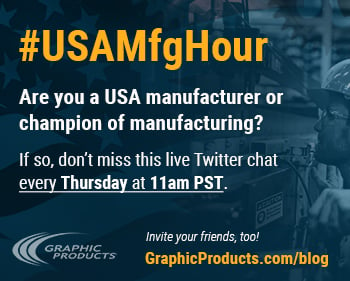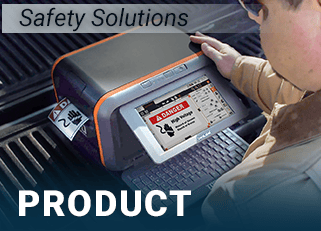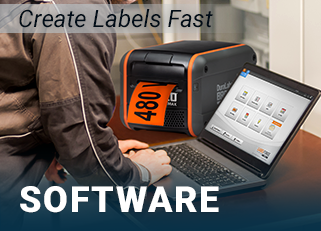Mastering Customer Experience Optimization
03
February,
2023
8 MINUTE READ

The customer is always right. Right? What would your customers say about their experience working with you in every step of their journey? Optimizing the customer experience requires thinking like a customer. When businesses create a comprehensive approach that has follow-through from top-level management on down, the benefits are vast. Business consultant and author Nigel T. Packer of PelaTis talks about how businesses should know their customers more dynamically by understanding their journey, which then drives successful sales and brand recognition.
Website Deterrents
Perhaps unintentionally on some websites, there could be customer deterrents that steer away from business or cause someone to distrust the information there. Think about the last website you visited to make a purchase or to gain information. What are some of the features of the website that were bothersome?
Ruby Rusine of Social Success Marketing said there are a few things she dislikes finding on a website: sales information overload, slow functioning or loading, text that is difficult to read, and a lack of a search bar. "Clickbait (this one tops)," she added. "And those pop-ups that do not have an X button are so yesterday."
"Any time I'm asked to reveal my personal information in advance of an actual purchase," said Phil Samuels, an industrial sales and marketing expert.
"The worst is when you cannot find their contact information," said Dan Bigger, director of sales and marketing for Chenango Valley Plastics. "I look for that often and sometimes it is very difficult to find."
"We don't do much online shopping, but when a website doesn't have a clear path or their eCommerce technology is out of date, it could cost them the sale," said marketing project manager Mike Womack of NJMEP.org. "Even worse, if they don't have a live person that can assist."
"One thing that I don't necessarily like is a website that is so complex that it's hard to find what I'm looking for," said marketing specialist Ben Nordman of Obsidian Manufacturing. "Also, something that does not give me all the information I'm searching for with whatever I am going to the site for."
"My number 1 problem is if a website takes too long to load," said Obsidian's president Sue Nordman. "After that, I'd say not user friendly, difficult to find answers, no contact information, out of date information."
"Frequent pop-ups with graphics that block what I'm looking at," said social media intern Julianne Schaub of Striven Business Software. "It feels invasive, pushy. Like, if I need that information, I'm sure I'll find it."
"So many design graphics that pages are slow to load and navigation that is too busy/cumbersome," said social media manager JD of Cleveland Deburring Machine Company.
"Poorly organized or difficult to contact someone, social icons/properties buried or not there, so I have to go hunting," said digital marketing specialist Shannon Simpson of DuraTech Industries.
"I don't like when I go to a website and can't quickly figure out what they do," said owner and brand specialist Paul Kiesche of Aviate Creative. He also added:
- Get lost and confused
- It's messy and cluttered
- It malfunctions
- It's hard to read
- It doesn't work on mobile
"Oh man, I can just keep going," he said.
"I dislike when things don't make logical sense or when links are broken," said multimedia specialist Julie Basello for Radwell International. "Those are my biggest pet peeves."
"When it's generic, no tabs, clip art pics, no video and it looks like I could have made it in my sleep," said Obsidian sales specialist Nick Rivers.
"Banner pop-ups before the site even fully loads up," said John Buglino, a marketing expert for Optessa. "No, I do not want to be on your e-mail list (yet) ... give me a second to better understand what you do and how you can help."
"I don't like pop-ups asking for my email address to stay in touch as soon as I log on to the site," said technical sales manager Neil Hussey of Truturn Precision Engineering. "I'll give my email address if there's something I want or can see a benefit for me. This is true for business and personal."
"Poorly laid out, 404s and too much about the company and enough about what the customer wanted," said the team at Insight Before Action.
"Too much fluff," said the team at Artus Corp. "If I made it to your site, you did your marketing job already, now make the info easy to find."
Anything that delays or distracts a customer will stop them from getting to or moving around your site, Packer said. "We first asked this question in 2001, surprisingly not much has changed in the responses over 20 years," he said. "The technology has advanced but customers are still the same." Here are the responses from the last big conference Packer said he did in December 2019 of 320 international conference delegates:
- Pop-ups and adverts: 91%
- Welcome pages/animated/rotating pics: 73%
- Slow to load or use: 81%
- No contact details/can't find phone number: 55%
- Info: can't find answers to questions: 64%
- Difficult to navigate, illogical structure: 51%
- Register to get prices, delivery info, etc.: 22%
There are customers at every stage that expect high-quality service. How would your business describe your ideal customer?
"Where do you think you will find them? Other countries or other states?" Packer asked. "What path will they take to find the right location? Who would they speak to? There are lots more questions to be answered but thinking about these will help you."
"A mid-range manufacturing company looking to launch a new product, wants to do business in the U.S., and is looking to produce millions of parts," said Bigger of CVT.
"Businesses that are small to medium-sized that primarily deal in manufacturing, fieldwork, property management or retail, looking to streamline their processes from one platform," said Schaub of Striven.
"Manufacturer that is struggling to properly plan and schedule their production to meet specific business objectives," said Buglino.
"Like a member of the family, pays on time, comes back/repeat, communicates well, polite," said marketing director Gina Tabasso of Dar-Tech.
"I like it when a customer is informed already or was referred and is open to a relationship. I like to chit-chat a bit before throwing down," said Rivers.
"Great companies that are looking to form long-lasting relationships," said Artus.
"An OEM who is looking to outsource their machining of large repeat volumes of turned and milled components or manufactured electromechanical assemblies," said Hussey of Truturn Precision.
"At Aviate Creative, our ideal customer is a company in manufacturing looking to improve their branding, messaging, design, and effectiveness of their creative and marketing," said Kiesche.
"Returning customer who values our brand, recommends us and buys regularly," said Insight Before Action.
"Small to medium machining shops; engineer, foreman, technician or empiric; age 40 to 50; living in a rural or suburban area; has been machining all his life," said CEO Lermit Diaz of SCTools.
"A business that communicates what they need, are willing to work with us on what that need is, and treats us like they would a customer of their own," said Ben Nordman of Obsidian.
"You still must find new customers who may not know what you do," said Packer. "How do you present yourself to them when they don't know what they are looking for? Think about this aspect of their journey."
You will probably have more than one ideal customer, he said. "For customer research, identify and prioritize the top four and work on them one at a time."
Customer 4-1-1
Personas are a way of grouping information about customers. Have you prepared personas? What information should you include?
"We do have positive and negative marketing persona, and the information that we include are: Background, demographics identifiers (Demeanor & Communication Pref.), goals, challenges; what we can do; real quotes, common objections, marketing messaging, and elevator pitch," said Diaz of SCTools.
"Usually, we categorize by industry," said Schaub of Striven. "We consider common workplace issues that those working in a particular industry face. This also helps streamline relevant information for potential customers."
"We have not had time as we have a wide variety of customers that range all over the place," said Bigger of CVT. "It has been hard for us to narrow it down to just one. We keep it general until we can expand. Focus on education and show them our facility, and people, etc."
"Yes, I have customer personas: chemists, chemical engineers, purchasing agents, lab techs, CEO/owner," said Tabasso of Dar-Tech.
"I have one at the moment but am going to do one for each area we do," said Hussey of Truturn Precision. "You have to include where they hang out, what motivates them to be searching online, what their interests are, and what their pain points are."
"Yes, we are using and improving our personas," said Buglino of Optessa. "There is no shortage on what you can include - we've found pain points and motivators to buy a crucial part."
"Traits are a great one to see if there is a common attribute shared amongst others," said Insight Before Action. "Then you can respin this into your marketing."
"Remember, an industry sector does not buy your products and services, a human does," said Packer. "Try and understand them."
How do you ensure your broadcast content provides a touchpoint for your customer?
"We typically look at our analytics from what has worked and what has not worked in the past and then move from there," said Ben Nordman of Obsidian. "Adding in a call to action is also very important, whether including our site or phone number."
"Profiling the ideal customers and anticipating their issues means improving the website (with SEO as a primary consideration), industry associations, social media, and email campaigns," said Samuels.
"We try to educate and show all that we can so people see what we do here," said Bigger of CVT. "It is usually tied to a contact us."
"Always include that contact information so you can continue the conversation," said Schaub of Striven. "Otherwise, your content is just yelling. That can be a link to a website, a phone number, or a call to action."
"We deliver our content across different platforms and channels," said Buglino of Optessa. "We also have the tried-and-true email database to message our clients directly, pointing to specific updates & news."
"I'd find a relevant benchmark associated to a relevant touchpoint and observe with metrics and analytics thereafter," said Insight Before Action.
What do you "sell" and what do your customers "buy"? Is it the same?
"No, it's not the same thing," said Sue Nordman of Obsidian. "That's why it's so important to listen to your customers. And listen to your sales team."
"I think for each persona's touchpoint there should be a solution addressing the need for that point of the journey," said Rusine of Social Success Marketing. "Sell only toward the end of the journey. For B2Bs the lag time until conversion can be longer. Whereas for B2Cs lag time is shorter."

"We sell industrial automation products, parts, and repair services-our customers buy a solution to keep their plant up and running or to get it up and running," said Basello of Radwell.
"This is dependent on whether you 'listen' to your market and draw a closer correlation between the 2 overtime," said Insight Before Action.
"We sell specialty chemicals & raw materials to product formulators," said Tabasso of Dar-Tech. "What they buy is a solution, a recommendation, an option, a price point, a combination of products that may allow them to meet their formulary need. We sell products but they buy a consultant."
"Respect, quality, service, a uniquely good experience, honesty, relationship, and professionalism," said Rivers of Obsidian. "If I can hit most of those on a good level, they will remember us in the future. I'm selling ME first!"
"No, what we sell and what they buy are not the same," said Bigger of CVT. "They are buying us, CVT, a U.S. manufacturing company that stands behind what we do to satisfy their needs. The services we provide augment what they buy."
"Because Striven is so hands-on, we're constantly trying to improve the product for our users," Schaub said. "Making a sale is the start of a longer partnership where we continue to provide support-which is what our users are looking to buy. They want an on-going, good experience."
"We sell relief to manual inputs to complex manufacturing processes - the customer buys software," said Buglino.
It's important to look for those unintentional barriers in your company that could be prohibiting a smooth customer journey. Create plans, do the work, check on progress, then act on problem areas for better customer experience optimization (PDCA). Then, repeat.
About #USAMfgHour
Anyone who champions U.S. manufacturing can join in on a new conversation each week on Twitter using the hashtag #USAMfgHour. The chat starts at 11 a.m. Pacific Standard Time/2 p.m. Eastern. Share positive blog posts, helpful articles, news, important information, accomplishments, events, and more with other manufacturers and supporters from throughout the country.
Are you interested in hosting a #USAMfgHour chat? Contact organizers @CVTPlastics, @DCSCinc, and @SocialSMktg.
RELATED RESOURCES

Generating Quality Leads in Manufacturing
Finding the right leads for your business can be time-consuming and, sometimes, lead to nowhere. ...
Read
Utilizing Effective Websites for Manufacturing
Having an online presence when it comes to business is more than just having a website. Rebecca Hart of Drive ...
Read
Tips to Attract and Retain Workers in Manufacturing
Manufacturers need a strong recruitment strategy to keep ahead of production and meet business goals. Here ...
Read.png)


